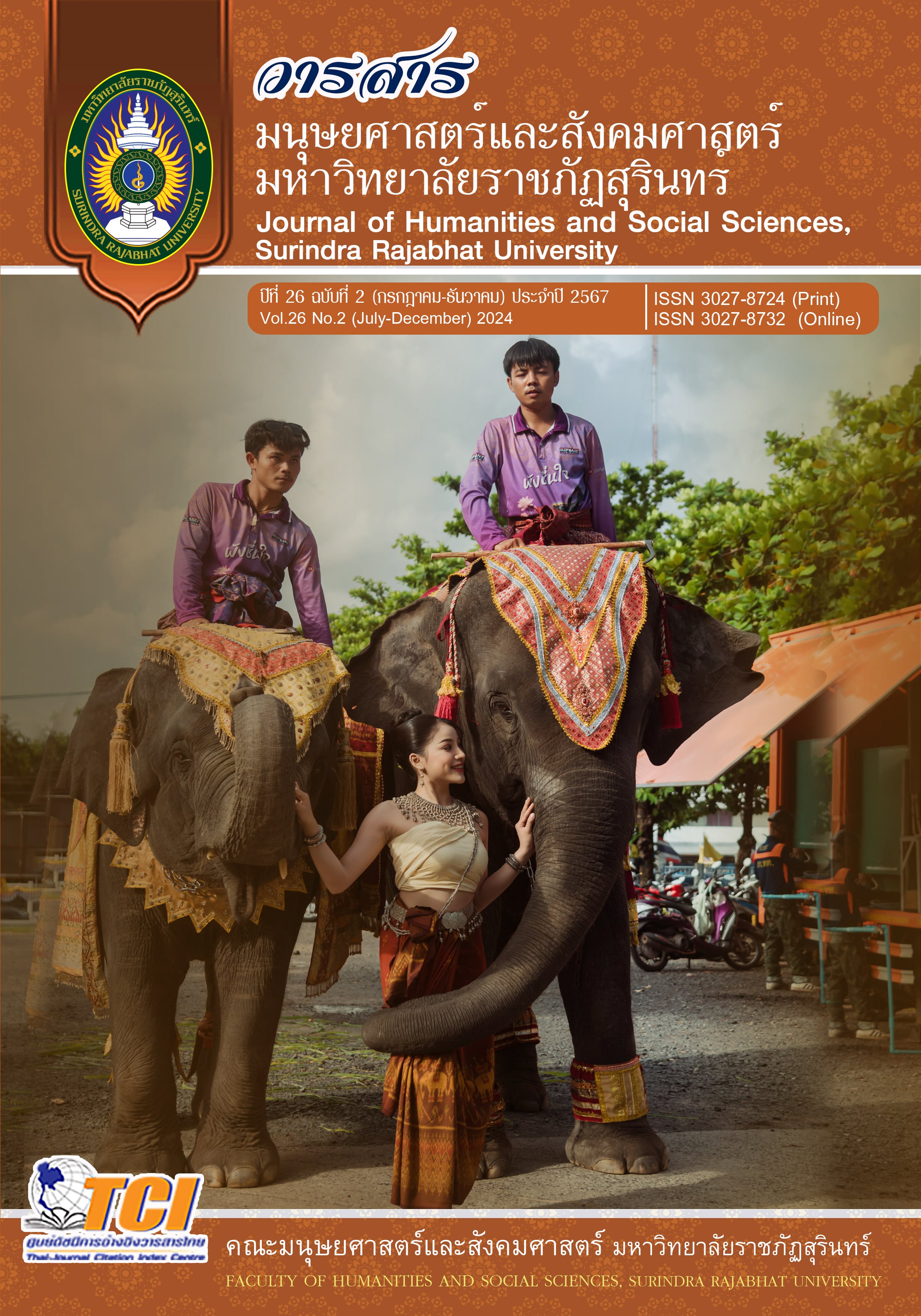Guidelines for the Development of Temples according to the Principles of Sappaya VII of the Sangha in Bua Chet District, Surin Province
Keywords:
Guidelines, Development of Temples, Sappaya VIIAbstract
This thesis entitled ‘Guidelines for the Development of Temple according to the Principle of Sappaya VII of the Sangha in Bua Chet District, Surin Province’ has three objectives : 1) to study the Principle of Sappaya VII in Buddhism, 2) to study the current conditions of temple development of the Sangha in Bua Chet District, Surin Province, and 3) to present the guidelines for the Development of temple according to the Principle of Sappaya VII of the Sangha in Bua Chet District, Surin Province. This thesis deployed the qualitative research methodology by studying documents from the Tripitaka and the Buddhist academic works as well as field studies where the data were collected from in-depth interviews. Finally, to present the analytic descriptive.
The results of this research were found :
The Principle of Sappaya VII in Buddhism found that the Principle of Sappaya is a comfortable condition, a favorable condition. These conditions are supported by a place or person that is beneficial or advantageous conditions, comfortable, suitable, supportive, or favorable. It divided into seven factors, namely; 1) Avasa-sappaya (suitable abode), 2) Gocara-sappaya (suitable resort), 3) Bhassa-sappaya (suitable speech), 4) Pugggala-sappaya (suitable person), 5) Bhojana-sappaya (suitable food), 6) Utu-sappaya (suitable climate) and 7) Iriyapatha-sappaya (suitable poster). The principles of Sappaya 7 can be applied to the Sangha in developing the temple into a pleasant place. It's a place of worship. Suitable for Dhamma practice.
The current conditions of temple development of the Sangha in Bua Chet District, Surin Province found that the temple is divided into three sections, namely : 1) the section containing the chapel the sanctuary of public precincts of a monastery, 2) the section containing the monks’ living quarters,3) the section of monastics property. Divided according to the Sangha Act. For the benefit of using the space in the temple area and creating a sense of community. The highlight is the Sangha in Bua Chet district located in an area with great natural richness.
The guidelines for the development of the temple, Surin Province found that the guidelines for the development of the temple according to the principle of Sapppa VII. The details are as follows: 1) Avasa-sappaya (suitable abode), such as the development or improvement of temples to be clean, 2) Gocara-sappaya (suitable resort), such as the promoting the traffic discipline and being a learning pathway, 3) Bhassa-sappaya (suitable speech), such as promote the constructive dialogue and communication that contributes to learning between monks and layman,
4) Pugggala-sappaya (suitable person), such as the encouraging the good friends or the person who help and take care of each other within the temple and public communities, and promoting the morality to guide monks, 5) Bhojana-sappaya (suitable food), such as the nutrition management is to promote the offering of restaurants that will be a good source for the health of monks, 6) Utu-sappaya (suitable climate), such as the organizing the environment withing the temples and public communities to have a suitable condition conductive to nature and learning, and 7) Iriyapatha-sappaya (suitable poster), such as promoting the monastic exercise for monks by deed a various religious routine.
Downloads
References
นรีวัลคุ์ ธรรมนิมิตโชค. (2550). “การศึกษารูปแบบของวัดที่เหมาะสมกับการเป็นแหล่งการเรียนรู้ตลอดชีวิต”. วิทยานิพนธ์พุทธศาสตรมหาบัณฑิต สาขาวิชาการจัดการเชิงพุทธบัณฑิตวิทยาลัย มหาวิทยาลัยมหาจุฬาลงกรณราชวิทยาลัย.
พระครูโสภณพุทธารักษ์ (ธมฺมรโส) และคณะ. (2560). “การประยุกต์หลักสัปปายะ 7 เพื่อพัฒนาครูสมาธิ รุ่น 39 สถาบันพลังจิตตานุภาพ สาขา 73 วัดพระงาม จังหวัดตรัง.” วิทยานิพนธ์พุทธศาสตรมหาบัณฑิต สาขาวิชาสันติศึกษา บัณฑิตวิทยาลัย มหาวิทยาลัยมหาจุฬาลงกรณราชวิทยาลัย.
พระไตรปิฎกฉบับภาษาไทย. (2539). กรุงเทพฯ : มหาจุฬาลงกรณราชวิทยาลัย.
พระพรหมคุณาภรณ์ (ป.อ. ปยุตฺโต). (2553). พจนานุกรมพุทธศาสตร์ ฉบับประมวลธรรม (Dictionary of Buddhism). กรุงเทพฯ : มหาวิทยาลัยมหาจุฬาลงกรณราชวิทยาลัย.
พระมหาธัชธร สิริมงฺคโล (มาตรา). (2556). “การจัดการการทองเที่ยวเชิงพุทธของวัดหนองแวง (พระอาราม หลวง) อำเภอเมือง จังหวัดขอนแกน.” วิทยานิพนธ์พุทธศาสตรมหาบัณฑิต สาขาวิชารัฐประศาสนศาสตร์ บัณฑิตวิทยาลัย มหาวิทยาลัยมหาจุฬาลงกรณราชวิทยาลัย.
พระวีระศักดิ์ ชยธมฺโม (สุวรรณวงศ์). (2558, ธันวาคม 30). “แนวทางการจัดการวัดสันติสุขตามหลักสัปปายะ 7: กรณีศึกษาวัดธารน้ำไหล จังหวัดสุราษฎร์ธานี.” วารสารสันติศึกษาปริทรรศน์ มจร. 3(2) : 98-114.
สำนักงานคณะกรรมการการศึกษาแห่งชาติ. (2545). ความสำเร็จในการปฏิบัติภารกิจของวัด : ศึกษาเฉพาะกรณี วัดชลประทานรังสฤษฎ์ อำเภอปากเกร็ด จังหวัดนนทบุรี. กรุงเทพฯ : จุฬาลงกรณ์มหาวิทยาลัย.











